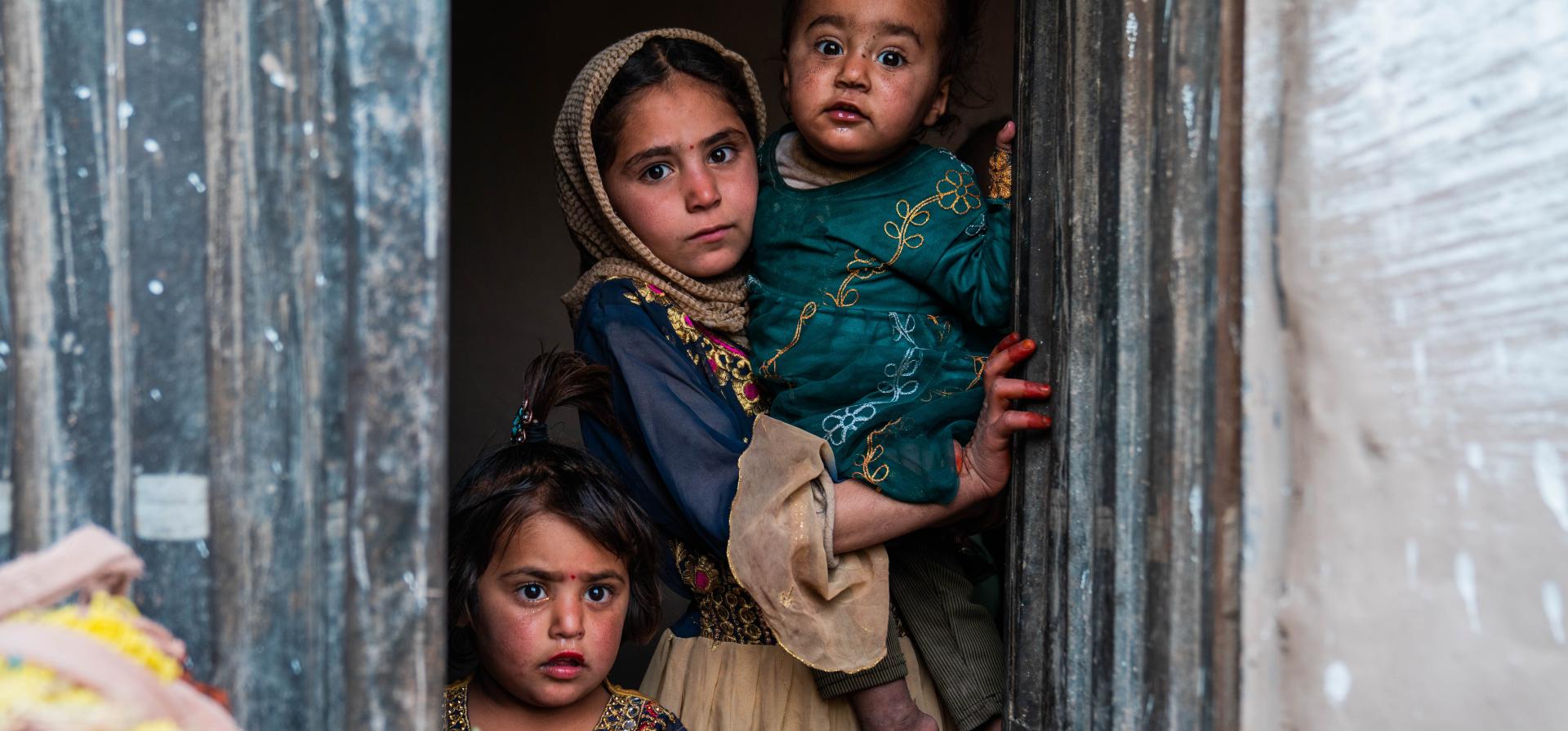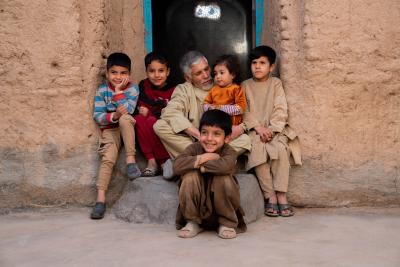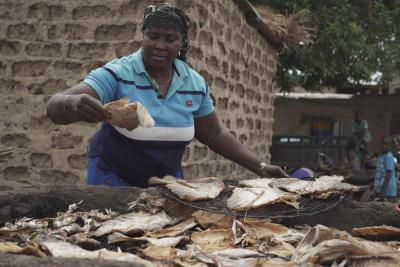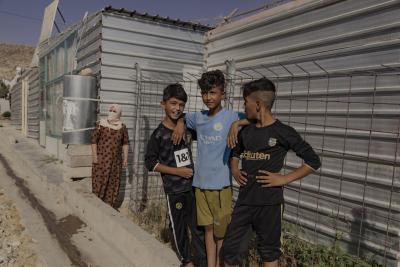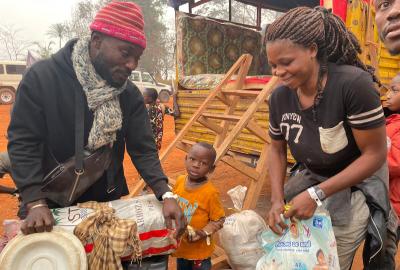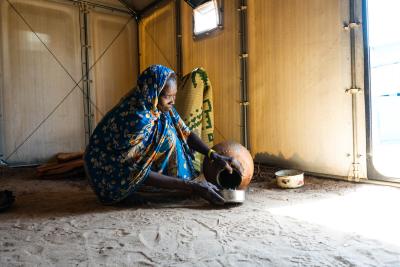Why does UNHCR ask for flexible funding?
UNHCR’s mission is supported by dozens of States, hundreds of companies, and millions of individual donors. What they share is compassion, generosity, and a desire to improve the lives of people who have been forced to flee or who are stateless. Many donors are motivated by a particular cause, something that touched them and spurred them to contribute, and they ask UNHCR to put their funds to good use in relation to that cause. In this way, many of the funds that UNHCR receives are “earmarked”, or dedicated to a particular country or a specific project. This is a vital lifeline for millions of people who are in need.
But instead of earmarking their support to an emergency or operation or theme, many donors contribute “flexible funding” to UNHCR and its mandate as a whole: this is funding as an expression of trust in the Office; as an expression of solidarity with the people the Office serves; and funding which is reflective of good humanitarian donorship and other international principles and commitments. It allows UNHCR critical flexibility in how it responds to needs, and where. This report shows how that happens, offering operational and thematic examples of how flexible funding made a difference.
What do we mean by “flexible funding”…?
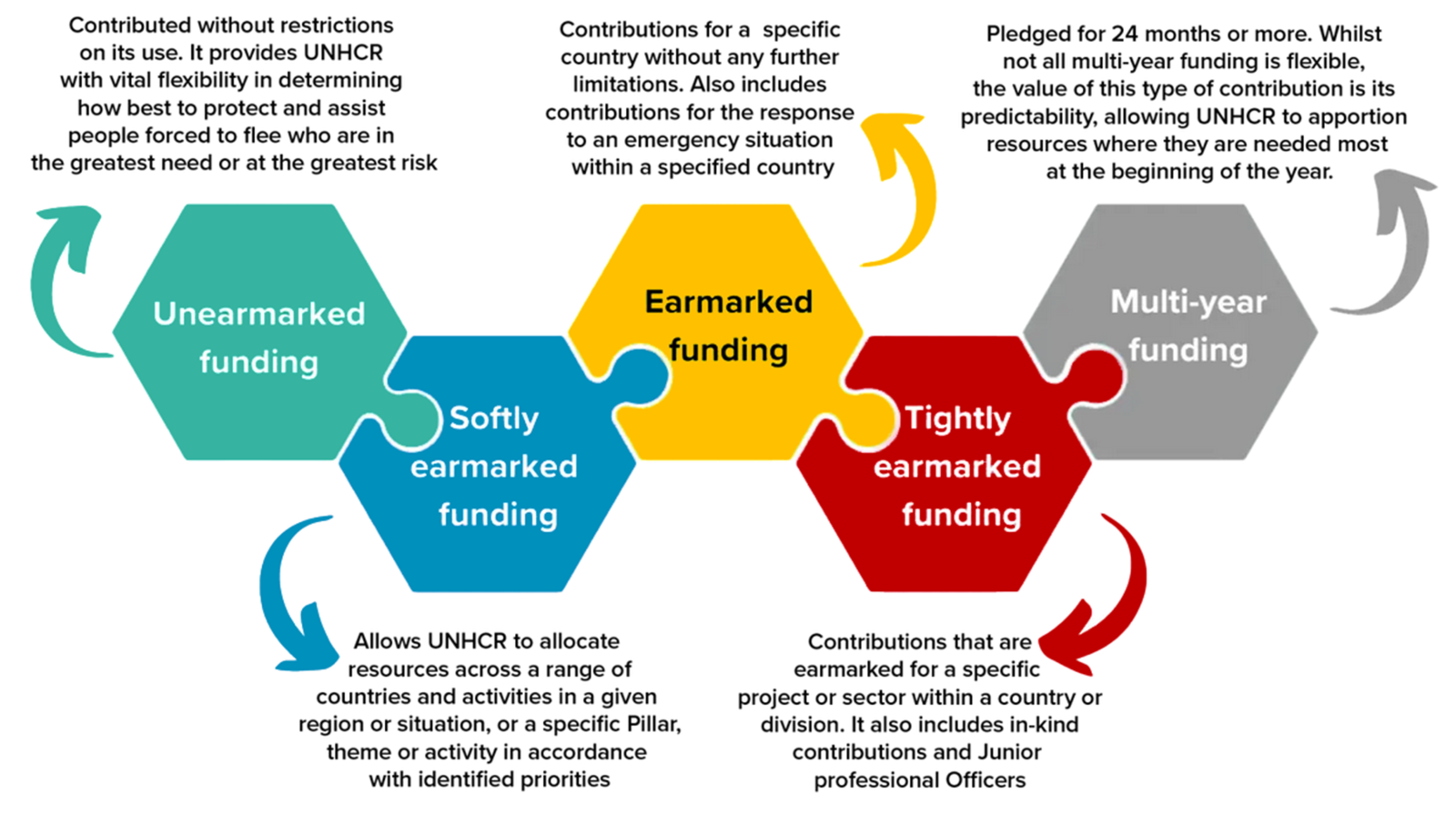
Amounts, sources and allocations of flexible funding
Amounts
Over the past ten years, whilst UNHCR's overall income has increased, the quantity of flexible funding - that is, funding which is unearmarked and can be spent without restrictions; or softly earmarked funding which, for example, can be spent on a region, a situation, or theme – has hardly increased. UNHCR received $1.678 billion in flexible funding in 2023, some 35% of the $4.835 billion in voluntary contributions raised that year. Of that flexible funding, $718.4 million was unearmarked (15% of all voluntary contributions), and $959.3 million was softly earmarked (20%).
Overall, flexible funding saw a significant decline from 2022 when UNHCR received $2.413 billion, largely driven by support for the Ukraine crisis. Flexible funding came to $1.677 billion in 2023, down $736 million or 30% from 2022.
Sources
Regarding unearmarked funding, in 2023, governments gave $440 million, or 61% of the total. The other $278 million (39%) came from the private sector, including $172 million from UNHCR’s National Partners. The reduction in unearmarked funding in 2023 meant that in addition to operations receiving less funding specifically directed to their countries, they had to rely on a smaller pool of unearmarked funds, while often having to respond to increased needs.
Regarding softly earmarked funding, UNHCR received $1.649 billion in 2022 and $959.3 million in 2023, a huge 42% drop. In 2023, governments gave $749 million, or 79% of the total, while the other $210.3 million (21%) came from the private sector. The decrease in 2023 amounted to $689.7 million, and 91% of it came from reductions from just ten donors – four governments and six private sector partners – which had stepped up their softly earmarked contributions significantly in 2022, only to reduce them even more significantly in 2023. This had significant consequences on UNHCR’s ability to respond to regional crises and situations.
At the 2023 Global Refugee Forum (GRF), the Governments of Denmark, Finland, Iceland, the Kingdom of the Netherlands, Norway, Sweden and Switzerland led the formulation of a multi-stakeholder pledge on Quality Humanitarian Funding for Refugee Situation, which now has 10 participating Member States. In line with Grand Bargain commitments, this pledge commends the generous ongoing contributions from current donors of quality funds and encourages their continued, long-term commitment to providing UNHCR with at least 30% of their annual humanitarian support in unearmarked funds, or 50% flexible funds. Where existing agreements do not meet this target, current and new donors are encouraged to mobilize additional resources to close the gap by the next GRF in 2027. UNHCR is engaged to support donors in fulfilling these commitments as well as expanding the list of pledges.
Allocations
Including unearmarked carryover from 2022, $1.637 billion or 32% of UNHCR’s total expenditure in 2023 was from flexible funding. This allowed for the allocation of $882.7 million or 17% from softly earmarked funding; $705.7 million or 14% from unearmarked funding, and $48.5 million or 1% funding from the 2022 unearmarked carryover.
The lion’s share of flexible funding expenditure was in the field: $840.5 million or 95% of softly earmarked funding, and $449.3 million or 64% of unearmarked funding. The remaining flexible funding was spent on UNHCR’s global programmes, including the totality of the 2022 unearmarked carryover. As per standard practice, no unearmarked funding was used to cover Headquarters costs.
The graphics below, and tables available at the bottom of this page, offer more details on the allocation of flexible funding by operation, region, situation and Outcome Area.
Multi-year funding
On a final note, flexible funding includes not only unearmarked and softly earmarked funds pledged for a particular year but also funds that are pledged for 24 months or more. The value of this type of contribution is its predictability, allowing UNHCR to apportion resources where they are needed most at the beginning of the year.
Multi-year funding for use in 2023 amounted to $746 million, higher than the $618.3 million available for use in 2022. The top five providers of multi-year funding in 2023 were Sweden, Germany, Denmark, the European Union, and the Kingdom of the Netherlands. Altogether, their contributions for 2023 constituted 55% of the multi-year funding received by UNHCR for use that year.
The unearmarked portion of multi-year funding received for use in 2023 was higher compared to what was received for use in 2022 ($266.3 million in 2023 compared to $194.7 million for 2022). Nonetheless, with 42% of multi-year funding for use in 2023 still earmarked at country level or below, this meant that the level of predictability was not shared equally across operations.
The value of flexible funding: mandate, emergencies, and global reach
As a humanitarian agency mandated to provide protection and assistance to forcibly displaced and stateless populations, UNHCR’s impact is dependent on its ability to respond swiftly and flexibly. If UNHCR has to wait until resources are raised to respond, precious time and opportunities to make a difference and save lives would be lost. As a rights-based agency, UNHCR’s ability to protect those most affected is core—and is deeply linked to its informed understanding of those that are most vulnerable and most at risk. Flexible funding enables needs-based programming and direction of resources based on a holistic assessment of the intersections of needs, vulnerabilities and risks, both present and future. This is because flexible funding supports all programmatic areas, and allows for a strategic and proactive planning and response.
Here are the ways in which this form of funding is so important to UNHCR’s ability to assist and protect forcibly displaced and stateless people around the world.
Flexible funding allows UNHCR to deliver on its core mandate
For example, flexible funding is vital to UNHCR’s normative work in developing and strengthening legal frameworks and supporting adherence to international standards, in protection dialogue, advocacy, and in policy development. It is vital in the search for solutions such as resettlement. It increases UNHCR’s capacity to reach the most vulnerable people of concern by independently and impartially allocating its funds based on needs.
See the examples from UNHCR’s core work on policy and law, on local integration, and on supporting returns.
Flexible funding allows UNHCR to kickstart its emergency response, and to have greater impact with limited resources
When an unexpected emergency – an outbreak of fighting or a natural disaster – forces people to flee from their homes, it is crucial that UNHCR has the ability to meet their needs and to ensure that no one is left behind. UNHCR needs to act with speed and agility to bring life-saving support. Funds that are reserved or earmarked for other countries cannot be used. Flexible funding allows UNHCR to deliver assistance before an emergency appeal is launched, increasing its global presence and enabling it to reach the most marginal and vulnerable. The use of flexible funding can even remove the need for a separate emergency response.
Flexible funding is important in the before, during and after of any emergency, but is also important in how it can be used quickly and efficiently across the breadth and depth of UNHCR’s operational response. In addition to kickstarting an emergency response, it can support innovation; bolster forgotten or under-resourced crises which are often overlooked for funding support; enable UNHCR to maintain support in the aftermath of a crisis, as suffering does not end when the initial emergency phase is over; and provide predictable financing for operations and implementing partners while earmarked funds are being raised.
See the examples from Afghanistan, Burkina Faso, Iraq and Angola; and Europe and the Ukraine situation.
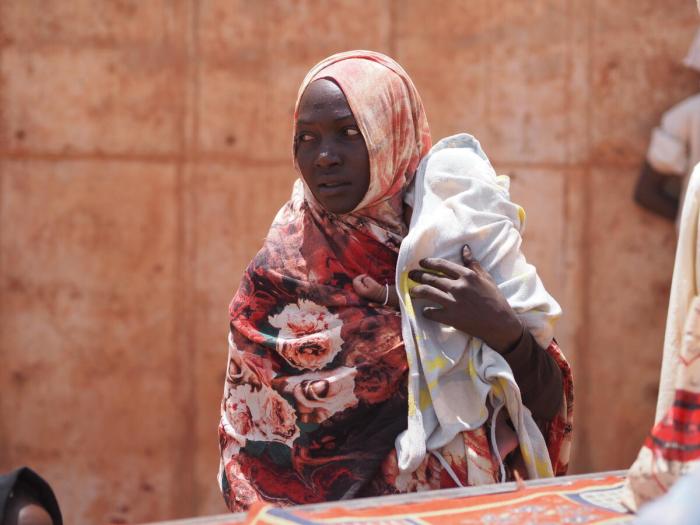
Flexible funding supports a global response
Flexible funding is also vital in allowing UNHCR to implement core thematic priorities that, although central to its mandate, receive little to no earmarked funding. This is the case for UNHCR’s global programmes. These are managed centrally and support UNHCR’s operations worldwide. These include activities such as stockpiling relief items and managing the supply chains that move them from production to the end user, or building up tools to increase UNHCR’s protection reach such as the ProGres v4 registration system, or CashAssist for cash distribution programmes.
Operational examples of the uses of flexible funding in 2023
Flexible funding is allocated to where it is most needed. Once more earmarked funding is received for an operation, the flexible funding that it is using is “released” to resource operations which continue to have major needs but have received less attention.
The following examples show at the global, regional, situational and operational level how flexible funding was used to support the delivery of lifesaving protection and assistance.
